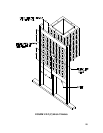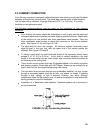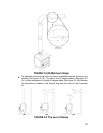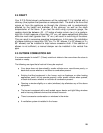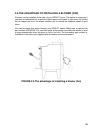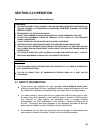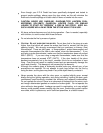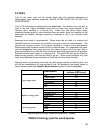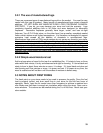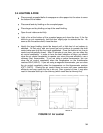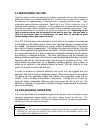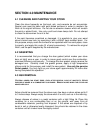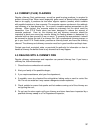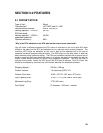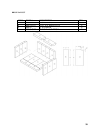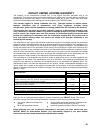37
4.4 CHIMNEY (FLUE) CLEANING
Regular chimney (flue) maintenance, as well as good burning practices, is required to
prevent chimney fires. When wood (especially green wood) is burned without adequate
heat or air supply, it produces tar and other organic vapours (smoke), which combine
with expelled moisture to form creosote. The creosote vapours condense in the relatively
cool chimney of a slow-burning fire. As a result, creosote residues accumulate on the
chimney. When ignited, this creosote makes an extremely hot fire which could be
hazardous. Your E.P.A Drolet stove has been designed to reduce the amount of
creosote produced. Even so, the chimney and any chimney connector should be
inspected at least once every two months during the heating season to determine if a
creosote build-up has occurred (3 mm or more). If creosote has accumulated, it should
be removed to reduce the risk of a chimney fire. Call a professional chimney sweep, or
go to your local E.P.A Drolet dealer, purchase a chimney brush, and have the chimney
cleaned. The chimney and chimney connector must be in good condition and kept clean.
Contact your local, municipal, state, or provincial fire authority for information on how to
handle a chimney fire before there is any chance that it may happen.
4.5 DEALING WITH A CHIMNEY FIRE
Regular chimney maintenance and inspection can prevent chimney fires. If you have a
chimney fire, follow these steps:
1. Close the stove combustion air controls;
2. Alert your family of the possible danger;
3. If you require assistance, alert your fire department;
4. If possible, use a dry chemical fire extinguisher, baking soda or sand to control the
fire. Do not use water as it may cause a dangerous steam explosion;
5. Check outside to ensure that sparks and hot embers coming out of the chimney are
not igniting the roof;
6. Do not use the stove again until your chimney and stove have been inspected by a
qualified chimney sweep or a Fire Department Inspector;



